Apr 27, 2023
Introduction
13 years ago, a popular design blog called 52 Weeks of UX published the article, 'Email, the glue of UX'. The goal of the article was to help designers understand that not every application is an 'everyday app', and therefore, emails are a necessary channel of communication to keep users in the loop.
These emails, which are also known as 'transactional emails', 'product emails', or 'lifecycle emails' are one-to-one emails that are sent after a user performs key events on an application (eg. user registers for an account).
What was true many years ago, still rings true today – especially when viewed through the lens of marketplaces, which are transactional by nature.
Transactional emails within marketplaces
Within marketplaces, sellers and buyers (supply and demand) are connected by a platform (eg. eBay, Airbnb, Rover) to conduct a transaction. Within the lifecycle of each transaction, there are often multiple stages that require the platform to keep all parties informed about the status of an order/reservation. Within each stage, emails are sent to keep both sides updated.
To help illustrate this, consider the diagram showing an example of a transaction within a peer-to-peer marketplace for physical goods like eBay:
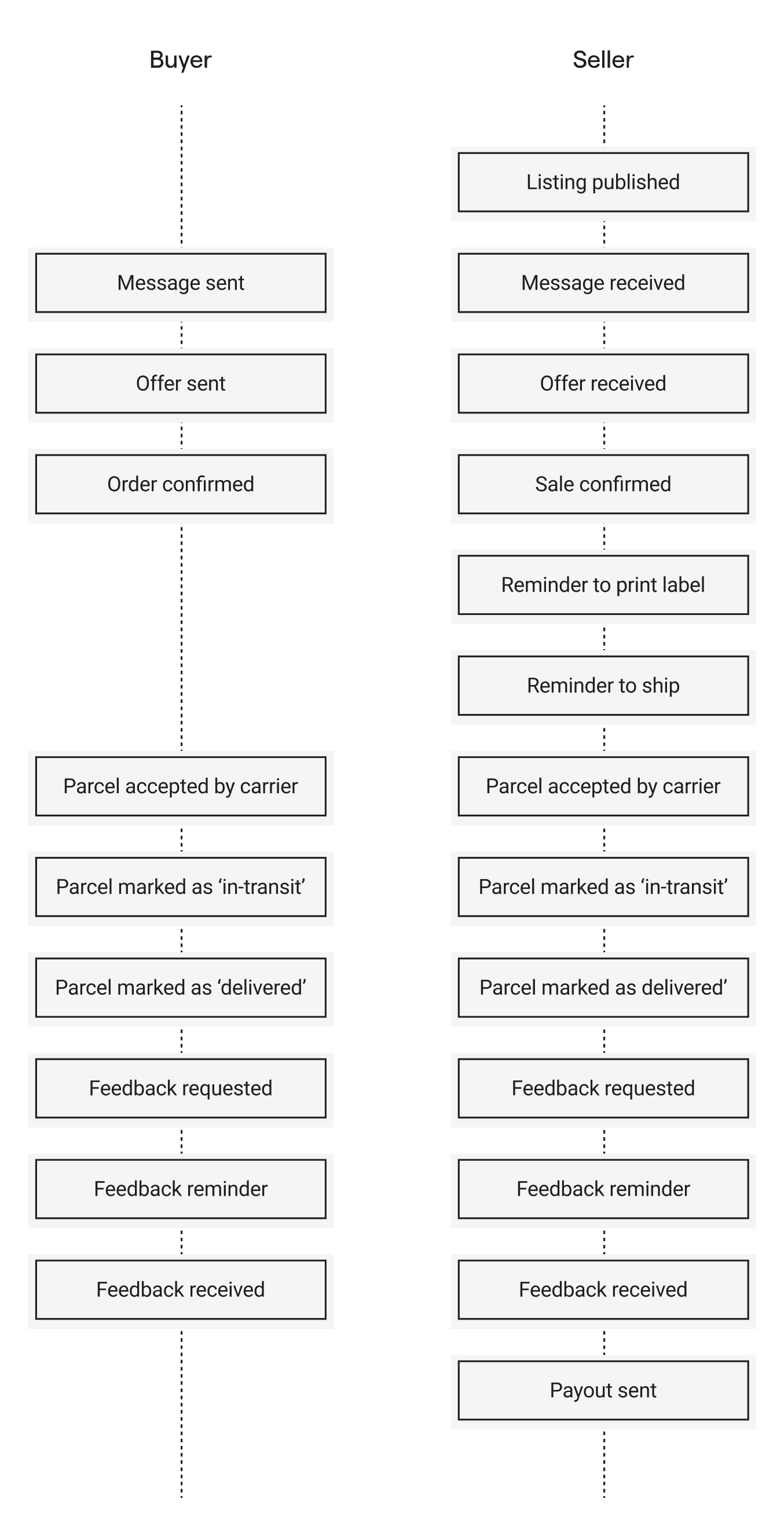
As you can see, many emails can be required in order to keep both sides in the loop throughout the entire lifecycle of a transaction. This also doesn't include all of the edge cases such as:
Offer not accepted
Payment failed
Offer expired
Order not fulfilled in time
Parcel shipment issues
Order canceled
Payment refunded
Feedback not received in time
Payout failure
Explore Waypoint's gallery of transactional email templates for marketplaces.
In terms of user experience, these emails work together to create a great experience by sending the right message to the right user at the perfect moment. In essence, they help users be successful on the platform.
Marketplace transactional email examples
Grailed – offer received
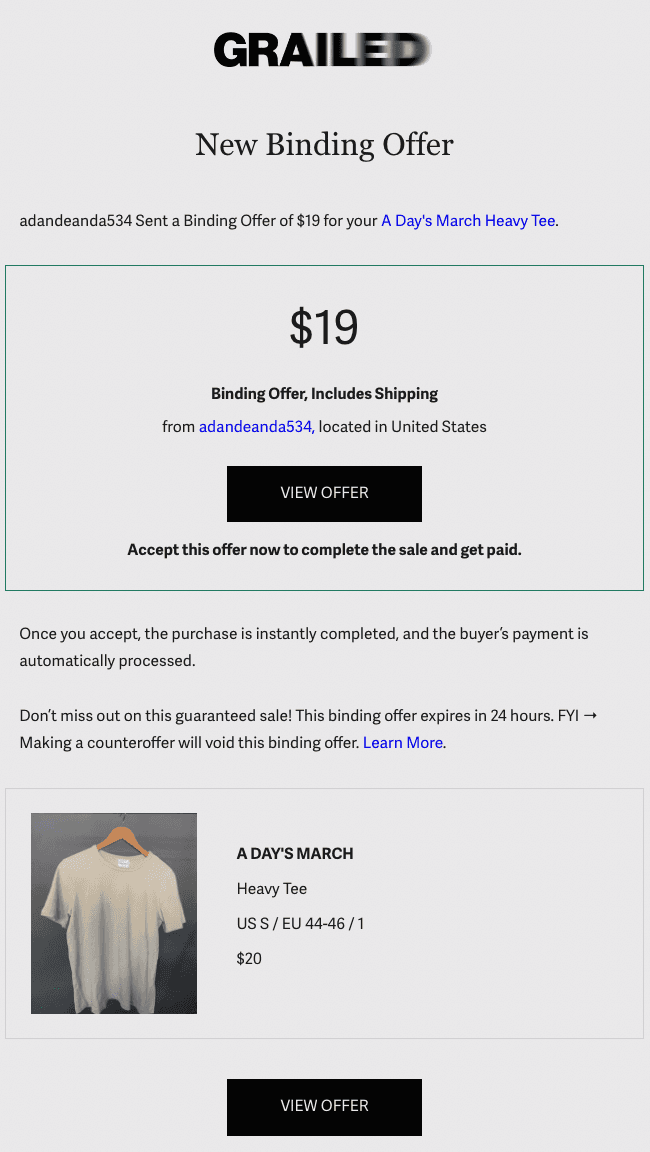
SidelineSwap – order receipt
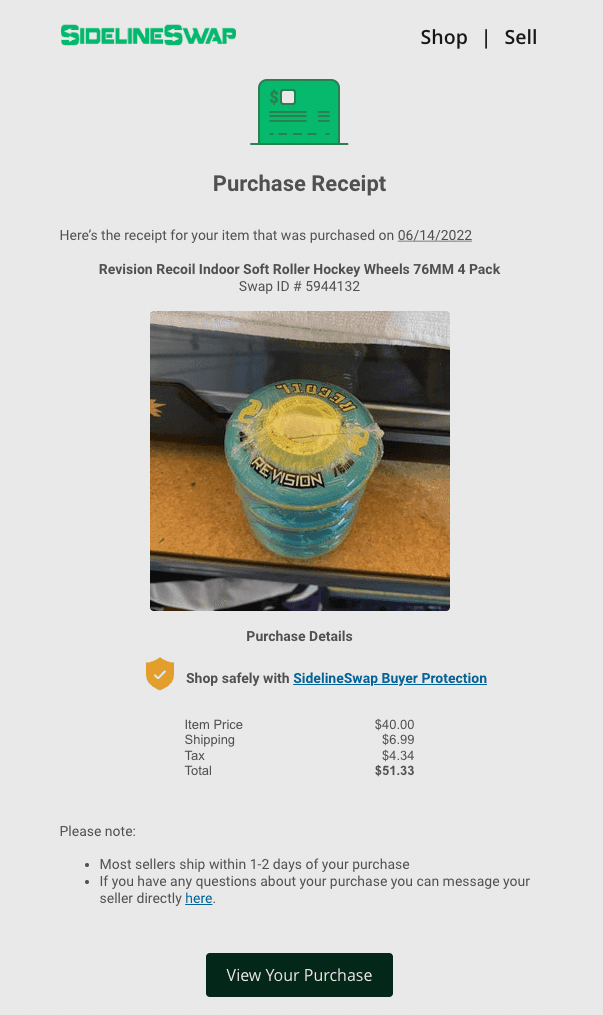
Airbnb – feedback received
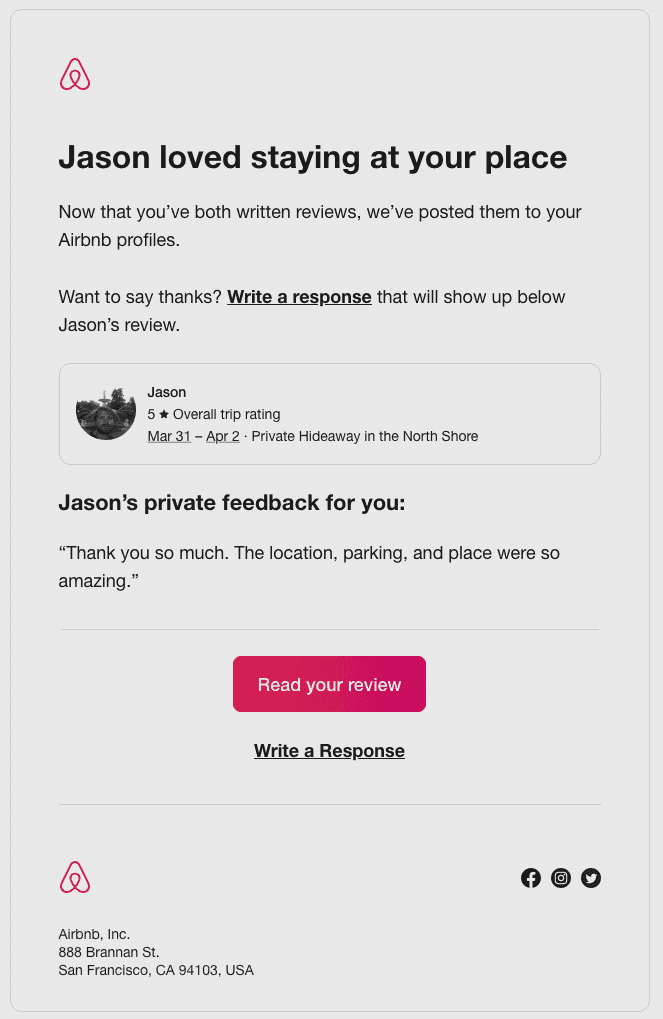
Airbnb – message received
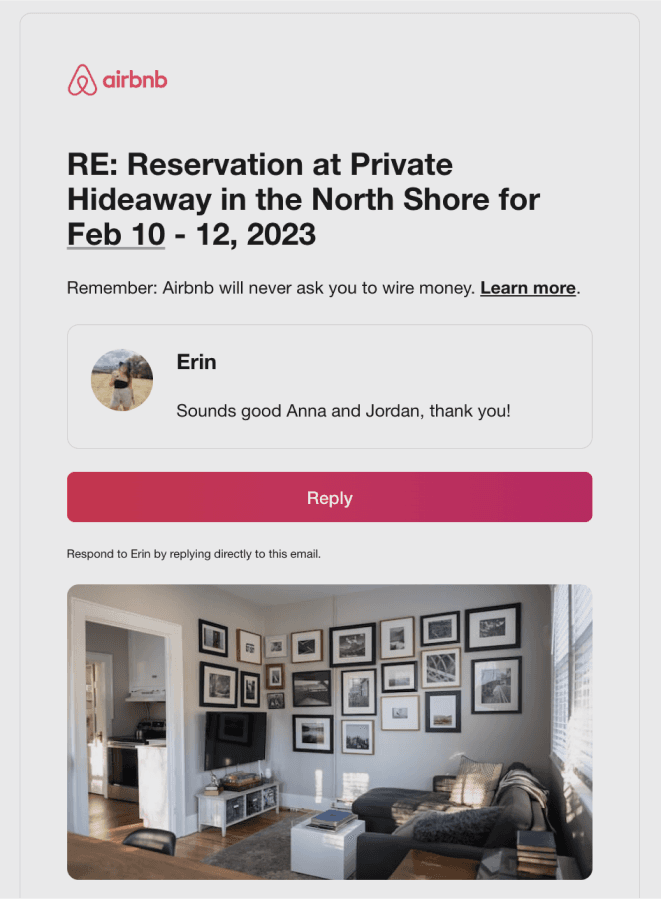
GeekMarket – order canceled
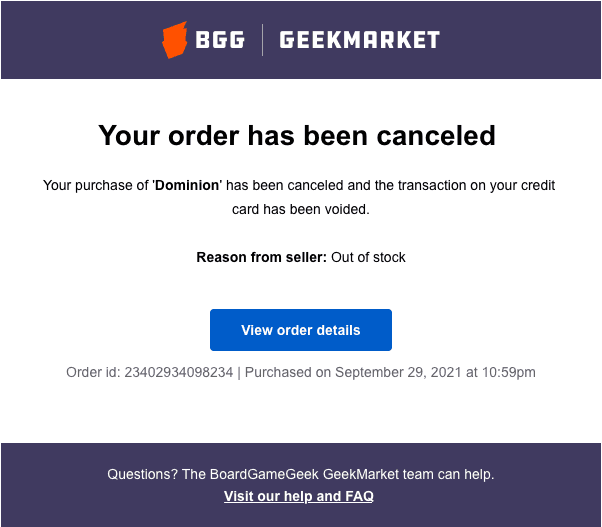
eBay – order arrived
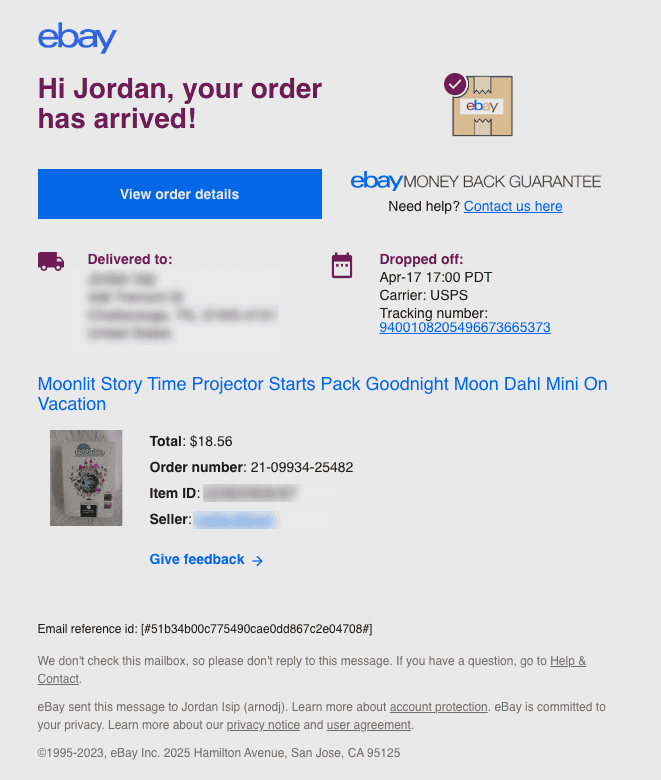
Thumbtack – project check-in + next project upsell
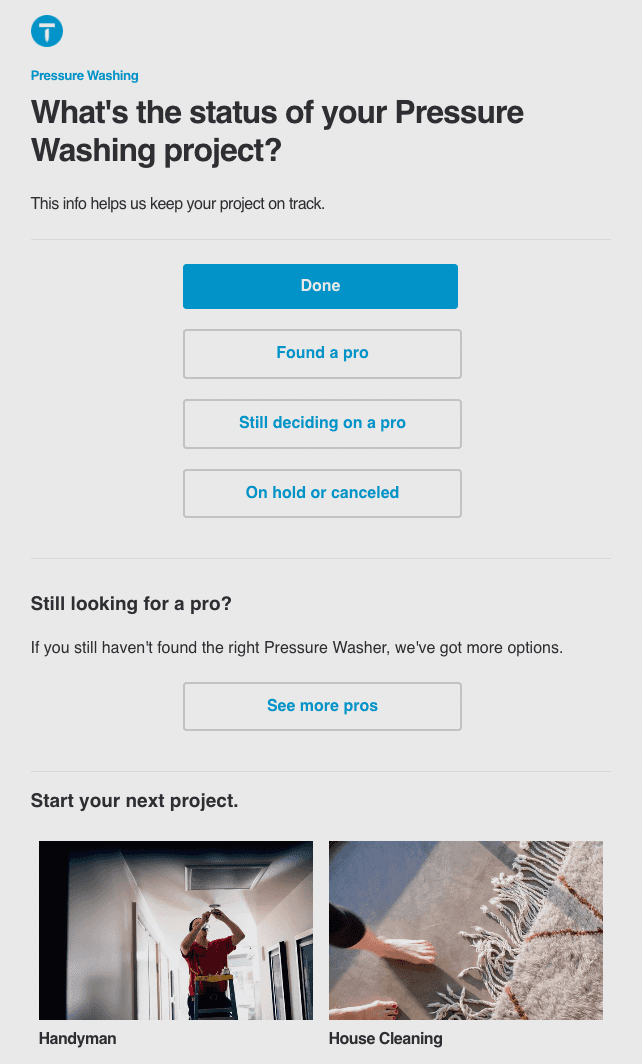
Bellhop – review and tip team
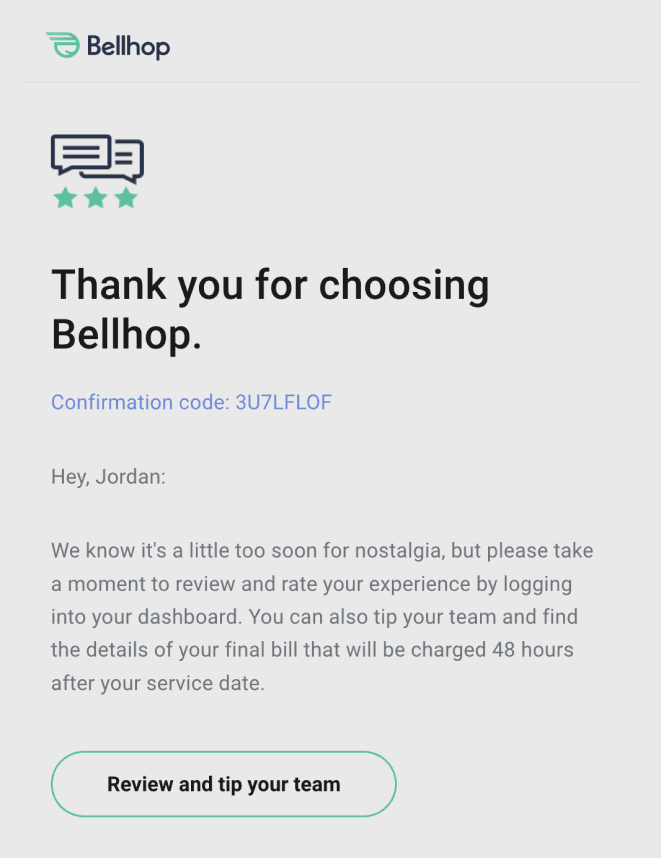
Additional email opportunities
In addition to keeping users informed, transactional emails are a fantastic opportunity to also:
Increase engagement – Emails may be sent to engage with users and encourage them to take further action based on certain conditionals. For example, if a first-time seller doesn't complete a sale 1 week after publishing their first listing, send a coaching email suggesting best listing practices or offers to promote the listing.
Increase trust and credibility – When users receive timely and relevant transactional emails from a marketplace platform, they are more likely to view the platform as a trustworthy and reliable source. This can lead to increased loyalty and repeat business.
Push branding and platform value – Emails can also provide a valuable opportunity for marketplace platforms to reinforce their brand identity and messaging. By incorporating consistent branding elements such as logos and colors, marketplace platforms can build a stronger connection with their users, increase brand recognition, and continue re-enforce marketplace value (why your marketplace exists and why they shouldn't disintermediate).
Increase revenue through upsells – Transactional emails offer an excellent opportunity for promotion due to their high open rates of 40-50%. This presents the chance to promote various offerings, including account upgrades, upsells to listing promotions, or product recommendations, among others. However, be sure to not overdo it – a recommended guideline is to ensure that promotional content constitutes 20% or less of the email's content.
Tools / email APIs
To add these kind emails to your marketplace platform, you'll want to first pick an transactional email service provider such as:
All of these email services will help you send emails with a high deliverability rate as well as give your team the tools to monitor emails for bounces and any other exceptions.
With deliverability out of the way, the next step is to think about how you'll setup the actual email templates. Unfortunately, writing manual code for these templates can be surprisingly difficult due to the differences in the way emails are rendered across clients and devices. This makes building templates by hand feel like you are writing HTML/CSS from the 90s and wildly time consuming to test and debug rendering issues.
Luckily, in 2023, there are a couple approaches to getting around this.
Code libraries like MJML provide component frameworks that make it easier to build HTML templates in your own codebase. If you go this route, you'll send the full HTML to your email service for delivery (which also means template changes require code changes).
Use a visual builder to create dynamic templates. This approach allows your team to abstract this pain away and help teams divide and conquer these data-rich templates. For example, a designer/PM could focus on the design and static content while a developer can just focus on passing the data to the email service via an API.
If your approach is to go with #2 – we strongly encourage you to consider Waypoint (yes, we are biased). However, Waypoint provides a visual dynamic template builder and built-in workflow automations that makes it so much easier and faster for teams to collaborate around orchestrating product emails with little to no code.
Waypoint's visual template builder in action:
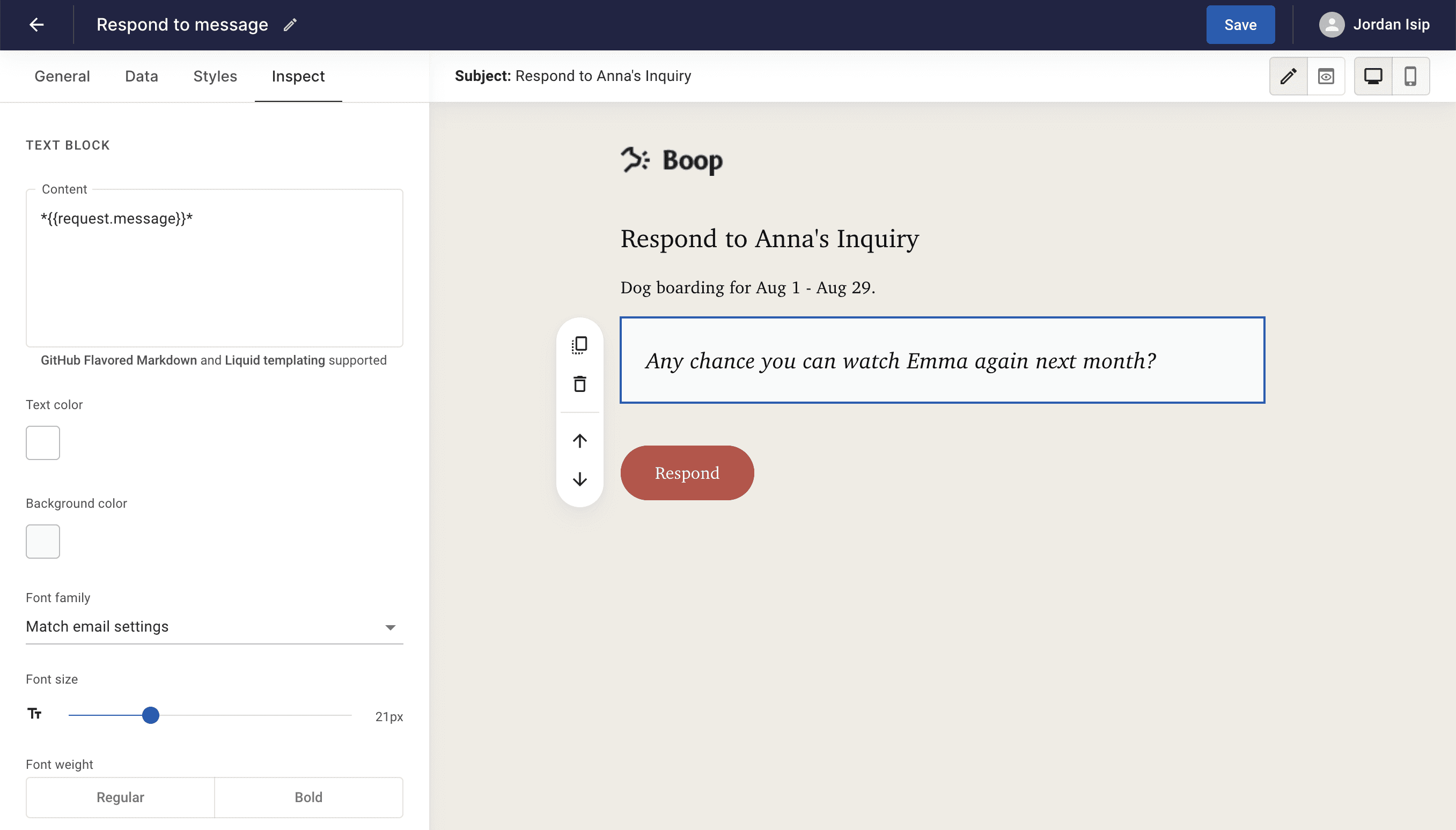
Why trust us
At Waypoint, we have a strong background in creating various types of marketplace software. From peer-to-peer eBay-style platforms to multi-vendor e-commerce, we have seen first hand the benefits of transactional emails within marketplaces. We understand the challenges teams face when it comes to crafting and managing these emails, which can be quite burdensome and time-consuming. That's why we built Waypoint: to simplify the process and empower teams to effortlessly create and manage these impactful emails, even without knowing how to code.
Conclusion
Since marketplaces are transactional in nature, emails throughout the lifecycle of each transaction are an essential part of any marketplace platform's communication strategy. If you are running a marketplace platform and would like to add product-triggered emails that scale with your marketplace, we encourage you to give Waypoint a try.
